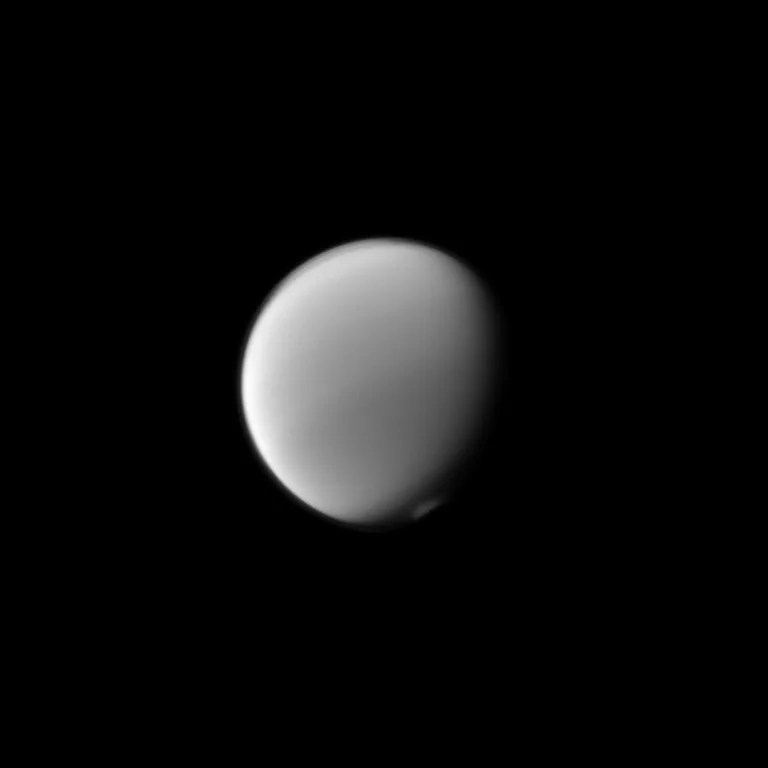3 min read

NASA’s Cassini spacecraft whizzed past Saturn’s smoggy moon Titan on April 7, sniffing the moon’s atmosphere as it made the closest planned pass for the remainder of the mission. Cassini’s point of closest approach during the flyby, named “T-100” by mission planners, was targeted at a mere 598 miles (963 kilometers) above the moon’s haze-obscured surface.
The close flyby altitude enabled Cassini’s Ion and Neutral Mass Spectrometer, or INMS, to sample the composition of Titan’s upper atmosphere as the spacecraft zoomed past. The instrument is capable of determining the chemical, elemental and isotopic composition of the gaseous and volatile components of the neutral particles and the low energy ions in Titan's atmosphere and ionosphere. During this flyby INMS was the prime instrument at closest approach.
Cassini’s Composite Infrared Spectrometer, or CIRS, continued its campaign to map the vertical structure of Titan’s atmosphere in far-infrared wavelengths of light, this time near 43 degrees south latitude. This was the most southerly latitude to be sounded by CIRS during this phase of the Cassini mission. Scientists are eagerly watching for seasonal changes as the moon’s southern hemisphere heads into its several-years-long winter season.
Also during this encounter, the Visible and Infrared Mapping Spectrometer, or VIMS, extended its global and regional map coverage of Titan at medium resolution (20 km/pixel). During the approach to Titan, VIMS observed as the moon’s extended atmosphere passed in front of the bright red star Antares. Such occultations of well-known stars provide a useful probe of the structure and density of the atmospheres of Titan and Saturn.
During the T-100 flyby, the spacecraft passed over mid-southern latitudes on Titan, making its closest approach over the central portion of the sunlit hemisphere (local noon on Titan). The flyby also took place at noon local time for Titan relative to Saturn – meaning Titan was on the sunward side of Saturn’s bullet-shaped magnetosphere. This geometry places Cassini in an intriguing region where the solar wind could interact directly with the magnetosphere that is created or ‘induced’ around Titan due to the interaction of Titan with its surrounding environment. Combined with a period of anticipated high solar activity, this flyby provided important observations of this unique region and of the effects of the sun’s input on Titan’s ion and neutral atmospheres. T-100 was the final flyby of the Cassini mission that could encounter Titan in this geometry. The remainder of Titan flybys are on the nightside of Saturn.
Although this encounter is numbered “100,” Cassini’s previous Titan flyby was actually the hundredth time the spacecraft made a close targeted approach to the moon. An extra flyby was inserted early in the mission but after the Titan flybys had been named. (Read more about the T-99 flyby:http://saturn.jpl.nasa.gov/mission/flybys/titan20140306/.)
Date
April 7, 2014
Altitude
598 miles (963 km)
Speed
13,000 mph (5.9 km/sec)







